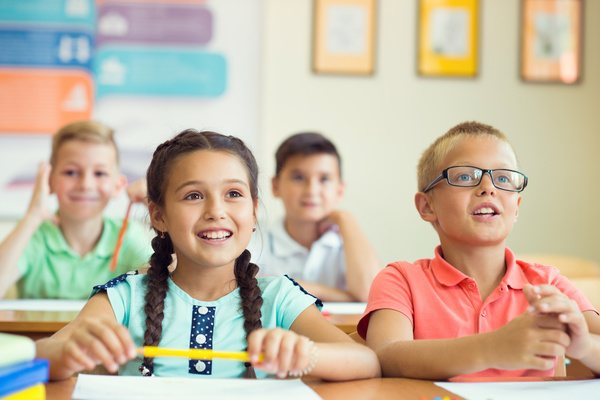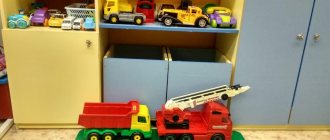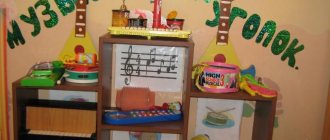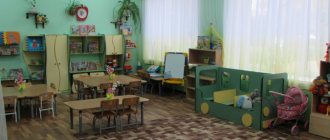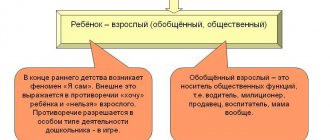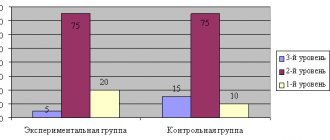The concept of the educational process in preschool educational institutions
In modern conditions of the preschool education system, the main goals and objectives of raising preschool children, as well as personal development, are solved in the conditions of the educational process.
Are you an expert in this subject area? We invite you to become the author of the Directory Working Conditions
The educational process of preschool educational institutions is holistic, systematic and purposeful. Its organization is carried out by the teacher, based on the laws of teaching, upbringing and development of the child. This accounting allows us to ensure the necessary result of the comprehensive development of children.
The comprehensive development of preschool children involves the following areas:
- Physical development
- Social and personal development
- Cognitive and speech development
- Artistic and aesthetic development
For example, in the field of cognitive and speech development, children develop curiosity, independence and initiative. In searching for new experiences and testing various methods of action, answers to questions and problematic situations that arise during the activity, the child’s speech develops.
The educational process in a preschool educational institution is characterized by the general principles of organizing the educational process as a pedagogical phenomenon, as well as the general structure and logic of construction.
The specifics of the educational process in preschool educational institutions are determined by the age characteristics of preschool children, the patterns of their development, as well as the needs for acquiring new knowledge and skills.
Finished works on a similar topic
Coursework Education and educational environment in preschool educational institutions 480 ₽ Essay Education and educational environment in preschool educational institutions 220 ₽ Test work Education and educational environment in preschool educational institutions 200 ₽
Receive completed work or specialist advice on your educational project Find out the cost
The quality of the educational process of a preschool educational institution largely depends on how the educator takes into account the principles of its organization and subsequent functioning.
Note 1
Thus, the educational process in a preschool educational institution is a purposeful process of comprehensive development, education and training of children aged 3 to 7 years, taking into account their individual and age characteristics, carried out using various models and forms of preschool education, in accordance with requirements of the Federal State Educational Standard.
DOW task
The developmental environment of a preschool educational institution promotes the modeling of conditions conducive to the manifestation of a child’s creative abilities, his knowledge of figurative language, and the realization of cultural-communicative and cognitive-aesthetic needs. With the correct selection of methods and techniques, children receive real opportunities for self-improvement.
The internal environment of an educational institution promotes cooperation, interaction, and mutual learning of children. With the correct organization of the developmental process, the comprehensive development of each child is achieved. Each child will be able to choose an activity to their liking and believe in their own abilities and strengths.
The developmental environment of an educational institution helps children acquire skills in interacting with peers and teachers, assessing and understanding the actions and feelings of other people. This is the basis of developmental education.
The concept of the educational environment of preschool educational institutions
For the successful implementation of the basic educational program of preschool education, in accordance with the Federal State Educational Standard for Preschool Education, it is important to create an educational environment.
The educational environment of the preschool educational institution is aimed at:
- Ensuring the protection and strengthening of the mental and physical health of pupils;
- Ensuring the emotional well-being of children;
- Professional development of teaching staff;
- Creating effective conditions for developing variable preschool education;
- Ensuring openness and accessibility of preschool education;
- Creating conditions to provide parents (guardians) with the opportunity to take an active part in the educational activities implemented by the preschool educational institution;
Note 2
The educational environment of a preschool educational institution has an impact on the effectiveness of the educational process, the nature of the established interpersonal relationships between subjects of education and the development of each student.
Components of the educational environment of preschool educational institutions:
- Interaction between participants in the educational process is a coordinated activity of the teacher, students and parents, aimed at achieving educational goals and obtaining a specific educational result.
- The developing subject-spatial environment of a preschool educational institution is an integral part of the educational environment of a preschool educational institution, represented by materials, furniture, toys, equipment, etc., selected in accordance with the age and individual characteristics of the pupils.
- The content of preschool education is a set of knowledge, skills, worldview, moral and aesthetic ideas, elements of cognitive, creative and social experience.
All of these components of the educational environment of a preschool educational institution are closely interconnected and are implemented by the teacher in the aggregate.
“There is no aspect of upbringing, understood as a whole, that is not influenced by the situation, there is no ability that is not directly dependent on the concrete world immediately surrounding the child...
Anyone who manages to create such an environment will make his work easier to the highest degree.
Among her, the child will live and develop his own self-sufficient life, his spiritual growth will be accomplished from himself, from nature...” E. I. Tikheyeva.
The issue of organizing a subject-developmental environment in preschool education today is particularly relevant. This is due to the introduction of the new Federal State Educational Standard (FSES) to the structure of the basic general education program of preschool education, including requirements for the organization and updating of the subject-development environment of a preschool institution. It is important to correctly approach the issue of creating a subject-developing environment. A developmental subject-spatial environment should be understood as a natural, comfortable environment, rationally organized in space and time, saturated with a variety of objects and gaming materials.
1. Requirements for a developing subject-spatial environment in accordance with the Federal State Educational Standard.
A developing subject-spatial environment ensures maximum realization of the educational potential of the group space.
A developing subject-spatial environment should provide the opportunity for communication in joint activities of children and adults, physical activity of children, as well as opportunities for solitude.
The developing subject-spatial environment should provide:
implementation of various educational programs;
- in the case of organizing inclusive education - the necessary conditions for it;
- taking into account the national, cultural and climatic conditions in which educational activities are carried out; taking into account the age characteristics of children.
A developing subject-spatial environment must be content-rich, transformable, multifunctional, variable, accessible and safe.
- The richness of the environment must correspond to the age capabilities of the children and the content of the Program.
The educational space must be equipped with teaching and educational means (including technical ones), relevant materials, including consumable gaming, sports, health equipment, inventory (in accordance with the specifics of the Program).
The organization of the educational space and the variety of materials, equipment and supplies (in the building and on the site) should ensure:
- playful, educational, research and creative activity of all pupils, experimenting with materials available to children (including sand and water);
- motor activity, including the development of gross and fine motor skills, participation in outdoor games and competitions;
- emotional well-being of children in interaction with the subject-spatial environment;
- The transformability of space implies the possibility
changes in the subject-spatial environment depending on the educational situation, including the changing interests and capabilities of children;
3. Multifunctionality of materials implies:
- the possibility of varied use of various components of the object environment, for example, children's furniture, mats, soft modules, screens, etc.;
- the presence in the Organization or Group of multifunctional (not having a strictly fixed method of use) objects, including natural materials, suitable for use in various types of children's activities (including as substitute objects in children's play).
- Environmental variability suggests:
- the presence in the Organization or Group of various spaces (for play, construction, privacy, etc.), as well as a variety of materials, games, toys and equipment that ensure free choice for children;
- periodic change of play material, the emergence of new objects that stimulate the play, motor, cognitive and research activity of children.
- Availability of the environment assumes:
- accessibility for pupils, including children with disabilities and children with disabilities, of all premises where educational activities are carried out;
- free access for children, including children with disabilities, to games, toys, materials, and aids that provide all basic types of children’s activities;
- serviceability and safety of materials and equipment.
- The safety of the subject-spatial environment presupposes the compliance of all its elements with the requirements for ensuring the reliability and safety of their use.
The organization independently determines the teaching aids, including technical, relevant materials (including consumables), gaming, sports, recreational equipment, inventory necessary for the implementation of the Program.
2. Functions of the educational environment of a preschool educational institution
The basic patterns of upbringing and training of preschool children make it possible to formulate the functions of the educational environment of a preschool educational institution in accordance with the preschool educational institution program.
- The function of stimulating children's activity is based on the goal of offering the child a variety of material for his active participation in various types of activities.
- Information function.
The necessary level of information content of the environment at different stages of the development of the child’s personality is ensured by the variety of topics, the enrichment of the functional properties of its elements, the completeness and diversity of its elements.
- Function of maintaining psychological health.
The environment is the most important factor for a child, influencing his emotional state.
The content of materials and equipment, their placement, and the layout of the premises should evoke positive emotions and make it possible to find a convenient place for both collective (“free space”) and individual (“solitude corner”, etc.) activities.
- The educational function of the environment does not require special decoding. The environment itself is the very center where bonds of cooperation, positive relationships, organized behavior, and caring attitude are born.
- The developmental function of the environment is the leading one. Only then can an environment claim the high title of developmental when it contains material that is feasible for every child, when it provides steps for the very advancement that we are talking about, meaning development. The developmental function of the subject environment requires for its implementation a combination of traditional and new, unusual components, which ensures the continuity of the development of activity from its simple forms to more complex ones.
3. The subject-developmental environment of a preschool educational institution as a condition for the successful socialization of a preschool child.
3.1 The influence of the subject-development environment on the development of the child’s personality.
A properly organized subject-developmental environment in a preschool institution (in a group) provides each child with equal opportunities to acquire certain personality traits and opportunities for his comprehensive development. But not every environment can be developmental.
The space organized for children in an educational institution can be both a powerful stimulus for their development and an obstacle that prevents the manifestation of individual creative abilities.
Targets for completing preschool education are clearly outlined in the educational standard. A child must have initiative and independence in various types of children's activities, the ability to choose an occupation, partners, to generate and implement various plans, be confident in his abilities and open to the outside world. Therefore, the subject-spatial environment that stimulates the child’s communicative, playful, cognitive, physical and other types of activity should be organized depending on the age specifics of his development.
The objective world of childhood is not only a play environment, but also an environment for the development of all specific children’s activities (A.V. Zaporozhets), none of which can fully develop outside the objective organization. A modern kindergarten is a place where a child gains experience of broad emotional and practical interaction with adults and peers in the most significant areas of life for his development. The developmental environment of an educational institution is the source of the development of the child’s subjective experience. Each of its components contributes to the child’s development of experience in mastering the means and methods of cognition and interaction with the outside world, the experience of the emergence of motives for new types of activities, and the experience of communicating with adults and peers.
The enriched development of a child’s personality is characterized by the manifestation of direct childish inquisitiveness, curiosity, and individual capabilities; the child’s ability to cognize what he saw, heard (the material and social world) and respond emotionally to various phenomena and events in life; the desire of the individual to creatively display the accumulated experience of perception and cognition in games, communication, drawings, and crafts.
A child’s activity in an enriched developmental environment is stimulated by freedom of choice of activity. The child plays based on his interests and capabilities, the desire for self-affirmation; engages not at the will of an adult, but of his own free will, under the influence of gaming materials that have attracted his attention.
Such an environment contributes to the establishment and affirmation of a sense of self-confidence, and it is this that determines the characteristics of personal development at the stage of preschool childhood.
Developmental education is aimed, first of all, at the development of the child’s personality and is carried out through solving problems based on the transformation of information, which allows the child to show maximum independence and activity; assumes the prospect of a child’s self-development based on cognitive and creative activity.
3.2.Developmental environment as a means of socialization of preschool children
A developmental environment is a system of conditions that ensures the full development of a child’s personality. It includes a number of basic sets necessary for the full physical, cognitive, social, and aesthetic development of younger preschoolers.
The subject environment is created taking into account the age capabilities of children, emerging sexual inclinations and interests and is designed in such a way that the child can find an exciting activity or activity during the day.
Man is a social being, his progress depends not only on biological, but also on social laws. Therefore, it is formed only in the presence of social living conditions.
In the process of interacting with other people, the child gains certain social experience, which becomes an integral part of his personality.
Socialization is the process by which a child learns the behaviors, skills, motives, values, beliefs, and norms of his or her culture.
Most often, the process of socialization is understood as a process of adaptation and accommodation.
Kindergarten is one of the main institutions of socialization, where the teacher organizes the conditions for the successful socialization of the child, covering the development of his behavioral, emotional-sensual, cognitive, existential, moral and interpersonal aspects of his life.
The subject-development environment should not create only external beauty. This is an open, changing, living system, enriched by novelty. The subject-development environment carries with it enormous opportunities to influence the child; it educates and develops him.
In preschool age, the main type of children's activity is play; it is in play that the child trains the social manifestations of his future adult life. He learns to interact with peers, feel them, measure and demonstrate his capabilities, determine his position in relation to the world around him and people. Activities in an enriched environment allow the child to show inquisitiveness, curiosity, explore the world around him without coercion, and strive for a creative reflection of what he has learned.
In a developing environment, the child realizes his right to freedom of choice of activities. He acts based on his interests and capabilities, strives for self-affirmation, engages not at the will of an adult, but at his own request.
This approach to organizing children's activities already contains a mechanism for self-development and self-realization of the growing personality.
For normal mental development, a child must always be in constant and continuous interaction with the social environment.
In role-playing games, children learn social roles, methods of interaction, rules of behavior in society, acquire various socially significant qualities, and also in the process of playing together with peers, the child develops the most important communicative qualities necessary for him in the field of communication and interpersonal interaction.
The subject-spatial world of a kindergarten includes a variety of objects and objects of social reality. Such an environment is necessary for children, first of all, because it performs an informative function in relation to them - each object carries certain information about the world around them and becomes a means of transmitting social experience. The subject-based play environment in a preschool institution meets certain requirements: first of all, this is the freedom of the child to achieve the theme, the plot of the game, certain toys, the place and time of the game.
Ensuring the psychological comfort of the child in an educational institution in order to maintain physical and mental health. In preschool childhood, this condition is an important component of quality education as a whole.
The construction of a subject-development environment by adults should make it possible to organize both joint and independent activities of children aimed at their self-development under the supervision and support of an adult. In this case, the environment performs educational, developmental, nurturing, stimulating, organizational, and communicative functions. But most importantly, it works to develop the child’s independence and initiative.
Enrichment and meaningful integration of the centers of activity of the subject-spatial environment, which has a versatile activation potential, promotes the active inclusion of the child in the educational process, is one of the significant psychophysiological mechanisms for transferring games into educational activities in order to form intellectual, personal, physical qualities, cognitive, social motivation of the child to development, self-realization.
Kindergarten teachers are obliged to create conditions for the emergence and development of play, for the development of communication between children in play, to promote the development of different types of play in children, to create conditions for the development of creative play activity of children, to develop in children, in accordance with their individual capabilities, the ability to self-expression, encourage improvisation through facial expressions, pantomime, expressive movements and intonations, teach children to distinguish between moods, experiences, emotional states of characters and people, conveying them through various gaming means, give children the right to choose gaming means.
— The developing subject-spatial environment is systemic, meets the goals of education and training and the requirements of project culture;
— initiates the child’s activity: its objects, means, goals and methods of achieving them are set by the subject environment;
- takes into account the specifics of the age stages of a child’s development, both leading activities (communication, objective activities, games, and others that arise early and develop towards older preschool age.
In other words, it solves the problem of creating a zone of proximal development through the organization of the subject environment; allows children to interact with each other and with adults;
- along with conservative components, it has frequently changing components that encourage children to learn through practical experimentation with these components, as well as to endow conservative components with new meanings. This gives rise to new ideas, methods, images, which enriches both the children’s activity itself (game, construction, and the development of children in it;
- provides the child with the opportunity to live in a different-scale space, commensurate with the actions of his hands (the “eye-hand” scale), his height and the objective world of adults;
— the developing function of the subject environment combines traditional and new components, which ensures the continuity of the development of activity from its simple forms to more complex and meaningful ones.
The principle of position distance in the interaction between an adult and a child. The group room is conventionally divided into three zones: quiet (study, book corner); medium intensity (theatrical, musical, construction zone); high traffic area (sports corner).
The principle of activity provides the opportunity for joint participation of an adult and a child in creating an environment that can change and be easily transformed. Integration and flexible zoning. The diversity of the subject-based developmental environment is structured according to the types of children's activities, provides children with a choice based on their interests and allows them to engage in interaction with peers or act independently.
Such an organization of space will create an opportunity to realize the right of children to freely choose the type of activity.
It is important that the subject environment has the character of an open, non-closed system, capable of adjustment and development. In other words, the environment is not only developing, but also developing. Under any circumstances, the objective world surrounding the child must be replenished and updated, adapting to new formations of a certain age.
CONCLUSION:
Activities in an enriched environment allow the child to show inquisitiveness, curiosity, explore the world around him without coercion, and strive for a creative representation of what he knows. In a developing environment, the child realizes his right to freedom of choice of activities. He acts based on his interests and capabilities. This approach to organizing children's activities already contains a mechanism for self-development and self-realization of the growing personality.
Thus, when creating a subject-developmental environment, as a condition for the successful socialization of a preschool child, it is necessary to take into account the psychological foundations of constructive interaction between participants in the educational process, the design and ergonomics of the modern preschool environment and the psychological characteristics of the age group at which this environment is aimed.
Literature
- Federal State Educational Standard for Preschool Education (Order No. 1155 of October 17, 2013)
- From birth to school. Approximate general educational program for preschool education / ed. N.E. Veraksy, T.S. Komarova, M.A. Vasilyeva. – 2nd ed. M.: Mozaika-Sintez, 2014
- Glushkova G. Subject-based developmental environment - a means of socialization of a preschooler / l “Preschool education No. 5.2013
- Kavtaradze D.N. Learning and play. Introduction to active learning methods.— M.: Flinta, 1998. 3.
- Tskvitaria T.A. Subject-spatial environment - publishing house "TC Sfera" - 2014
Modifications
The information and educational environment of an educational institution includes several components, taking into account a specific educational institution. For example, currently there is a virtual space that promotes the creative development of children. Thanks to information technology, every child develops self-development.
The pedagogical environment of an educational institution presupposes a specification of the term “learning environment”. It means the connection of specific communication, material, social conditions that ensure the processes of learning and teaching.
It is assumed that the student (trainee) is present in the environment and actively interacts with other subjects of the educational institution.
The educational environment of a preschool institution creates specially organized conditions that are aimed at children acquiring certain skills, abilities, and knowledge. Methods, content, goals and forms of work become accessible and mobile (changing) within a particular educational institution.
The external environment of an educational institution is a system that generates the learning process, permeated with characteristic, specific features.
Assessment of OS maturity
An examination of the social component is carried out according to the requirements of developmental education using special diagnostic techniques that are carefully selected from psychology and sociology. The main factor in ensuring the normal functioning of the social component of the developing educational environment will be improving the quality of retraining of teachers, in particular in the field of psychology. For such training, it is important for the teacher to periodically participate in various types of socio-psychological training.
Theoretical points
The educational environment of an educational institution is a subsystem of the sociocultural environment. It represents the sum of circumstances, factors, situations aimed at organizing pedagogical conditions for the comprehensive development of the personality of each child. This is a structure that includes several interconnected levels.
The global layer consists of global trends in the development of science, politics, and economics. The regional level is educational policy and culture. Local is the system, which includes the methods of education and training, the personality of the teacher.

Important aspects
The subject-developmental environment of an educational institution directly affects the success of a primary school student and his acquisition of independent orientation skills in the volume of information.
The development environment is a mediator and background for interaction between a child and an adult. In it, the child can share his experiences and build his own behavioral line. The educational environment of an educational institution should become a second home for him, where he wants to stay for a long time.
The economic transformations taking place in the modern world require an increase in the quality of education for young people, the creation of methods for the correct transfer of knowledge to children, so that they become worthy members of modern society. The idea of educational environments is the basis for solving the problem of adapting the younger generation to reality.
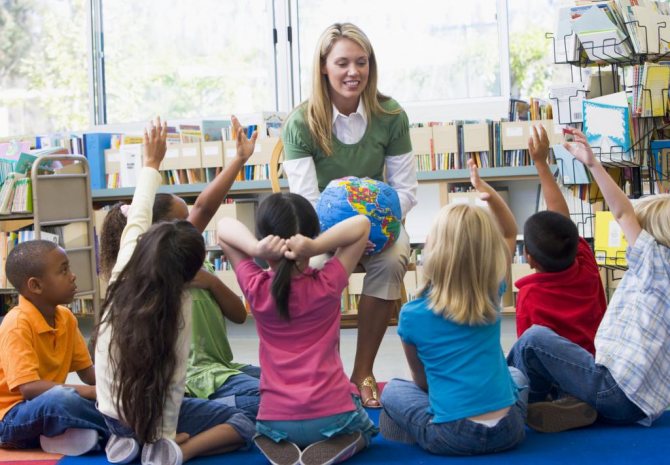
Information and educational system
Currently, it is the most popular and in demand in domestic education. In the concept of the development of distance education in the Russian Federation, it is considered as “a systematically organized set of means of transmitting various information, methodological, organizational support, focused on fully meeting the needs of children and adolescents.” To achieve this task, information exchange is carried out between various educational institutions, and special software is used.
V. A. Yasvin defined the educational environment as a process of purposeful formation of personality according to a conventional social model. He identifies the following elements as structural units: training programs, human factors, physical environment.
Uri Bronfenbrenner highlights the following:
- microsystem, which is characterized by a complex of relationships between the environment and the developing child;
- mesosystem, which involves a set of microsystems influencing each other;
- exosystem, covering special structures of formal and informal types;
- macrosystem, focusing on social, economic, legal, political structures.
V.I. Panov systematized models of the educational environment, highlighting the following directions:
- ecological-personal (V. A. Yasvin);
- communication-oriented (V.V. Rubtsov);
- anthropological and psychological (V. I. Slobodchikov);
- psychodidactic (V. A. Orlov, V. A. Yasvin);
- ecopsychological (V.I. Panov).
A technique for vector modeling of the educational and developmental environment appeared, which involved the construction of a coordinate system. One axis became “freedom-dependence”, and the second – “activity-passivity”.
The construction of a vector in this coordinate system for a certain type of educational environment is carried out on the basis of six diagnostic questions. Three relate to the presence in an environment of optimal opportunities for the full development of the child, the rest - opportunities for children’s self-realization.
Activity in this aspect is considered as a desire for something, initiative, struggle for one’s own interests, and passivity is the absence of such qualities.
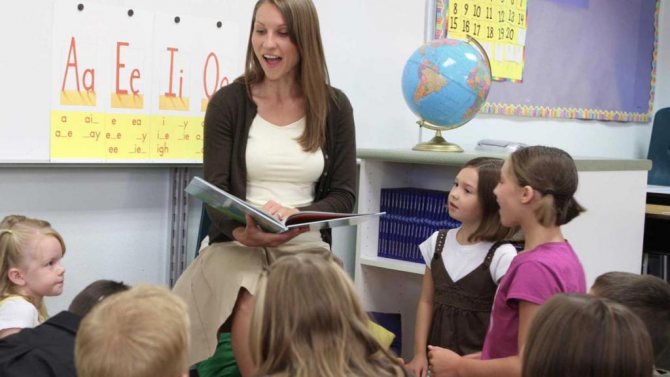
Design
J. A. Komensky (Czech teacher) considered the spatial-subject environment of an educational institution to be a “pleasant place”, in which there should be geographical maps, historical diagrams, space for games, a garden for communication with nature.
Makarenko noted the importance of equipping schools with a set of elements:
- benefits and furniture;
- materials and machines;
- decorative elements.
M. Montessori was the first to pay attention to the spatial-subject component of the educational environment as a key factor in the personal development of the younger generation. She designed a “preparatory environment” that encourages preschoolers and primary school children to realize their individuality through independent activity.
Didactic material: frames with nests of different shapes and inserts for them, cubes-inserts, children's furniture - all these devices gave the child the opportunity to independently find errors when performing certain exercises and eliminate them. Montessori considered the spatial-objective environment to be the most important element in children's acquisition of multifaceted sensory experience. Thanks to independent activity, children organize their ideas about the world around them, learn to understand and love nature.
The preparatory environment, according to Montessori, contributes to the child’s awareness of opportunities for spiritual and physical development. It helps the younger generation adapt to the demands of society. Montessori suggested that teachers choose exercises whose content corresponded to children's needs.
The spatial-subject component of the educational environment includes:
- school building architecture;
- level of openness (closedness) of interior design elements;
- spatial structure and size of premises;
- ease of transformation;
- possibility of movement for subjects.
V.V. Davydov, L.B. Pereverzev, V.A. Petrovsky identified the main requirements that apply to an integrated environment, without which the comprehensive development of children of preschool and primary school age is impossible:
- the content of various elements, without which optimization of the intellectual, physical, emotional and volitional components of activity is impossible;
- consistency, interrelation of individual elements;
- controllability (possibility of adjustment by both the teacher and the child);
- individuality.
Due to the complexity of the structure, the spatial-subject educational environment contributes to the development of each subject.
In such an environment, subjects not only search for, but also construct artistic, cognitive, sensory, motor, and play activities.
Domestic developments
The educational environment of an educational institution has been studied and created over many years by domestic and foreign teachers and practicing psychologists. At the Institute of Pedagogical Innovations of the Russian Academy of Education, N. B. Krylova, M. M. Knyazeva, V. A. Petrovsky formulated the philosophical aspects of the term “educational environment”, as well as thought out the technologies and techniques for its design.
The educational environment of a modern educational institution is based precisely on the works of the founders of developmental education. Thus, V.V. Davydov proposed, introduced, and tested the “school of growing up” model.
The educational environment of a preschool institution is a narrower concept. It refers to the functioning of a specific educational institution:
- material factors;
- spatial-subject resources;
- social components;
- interpersonal relationships.
They are interconnected, complement, enrich each other, and influence each subject of the educational space.
